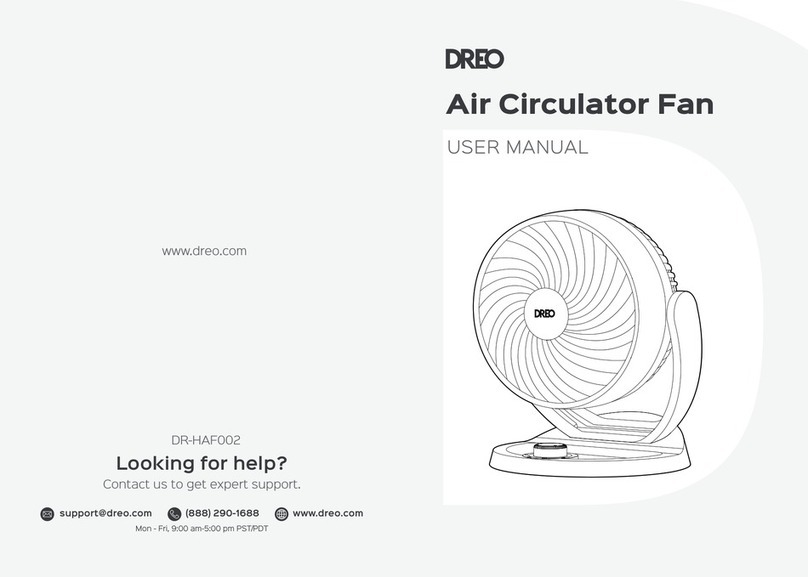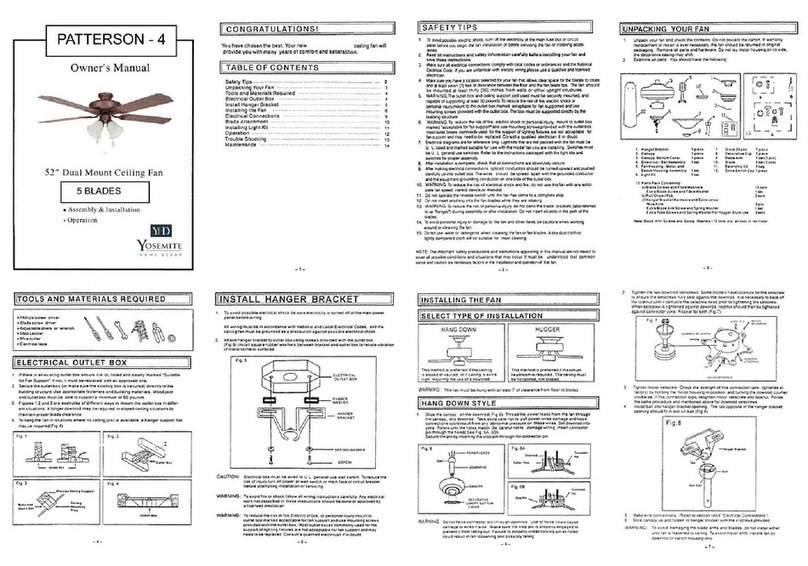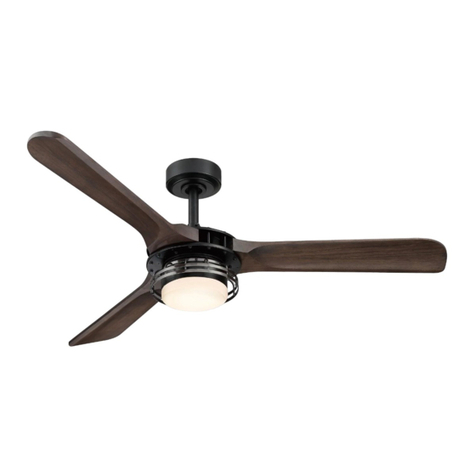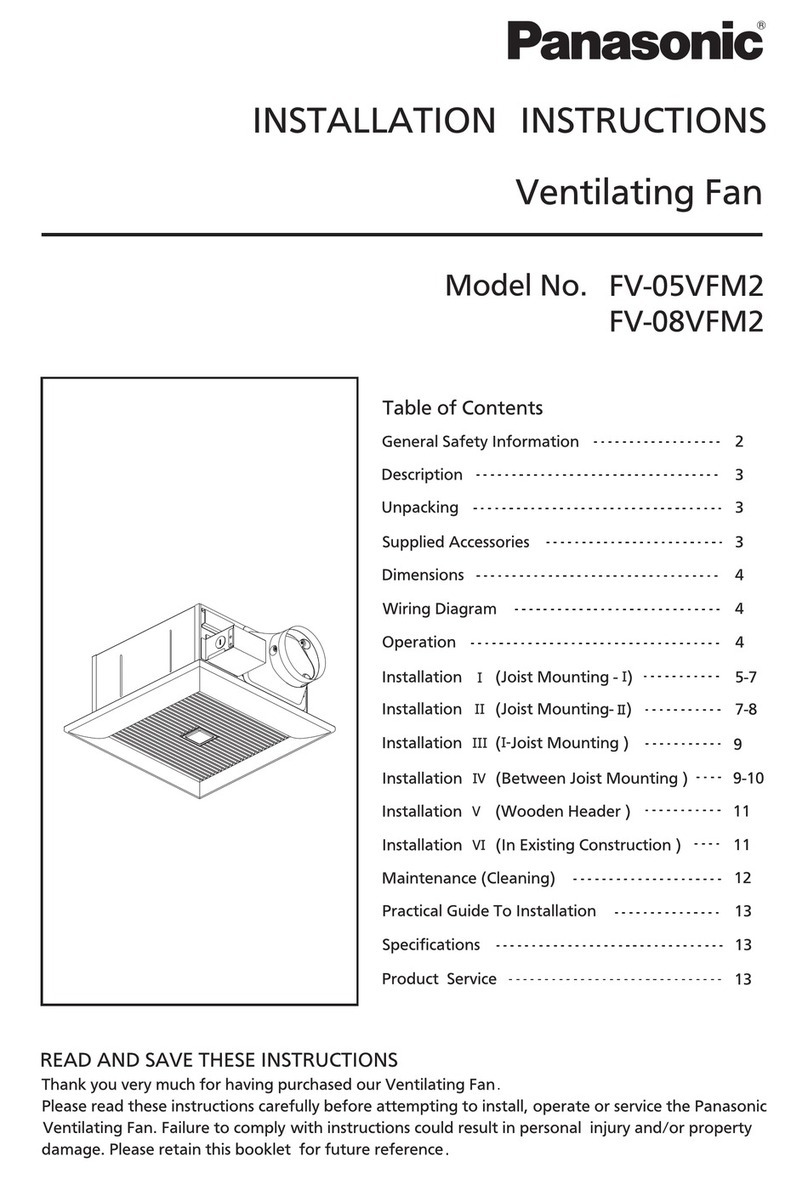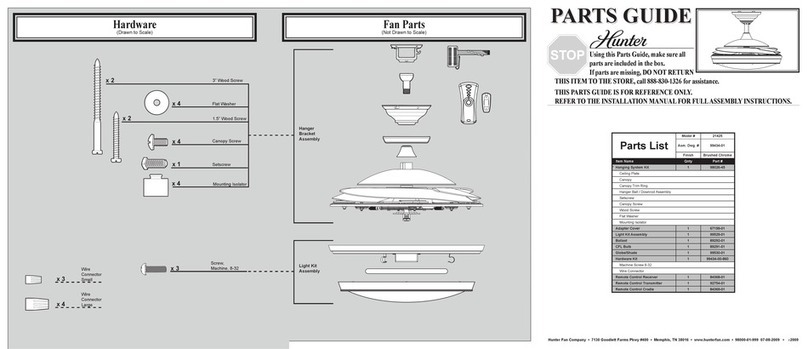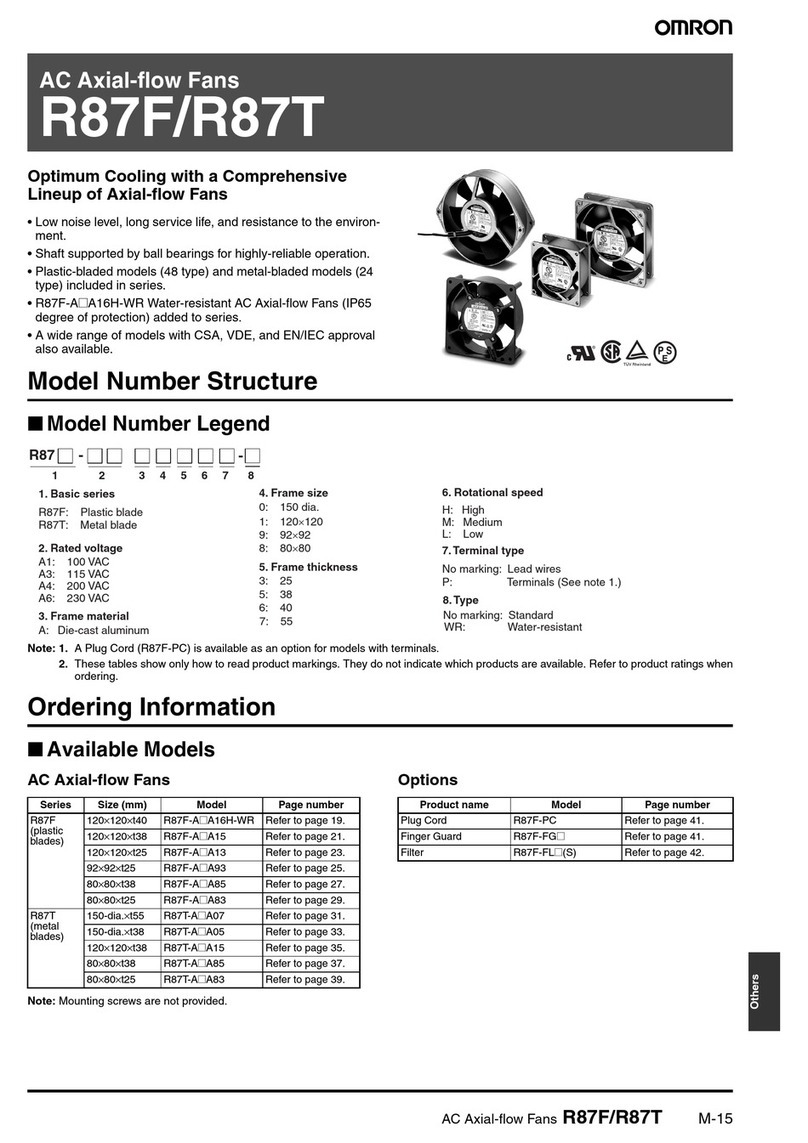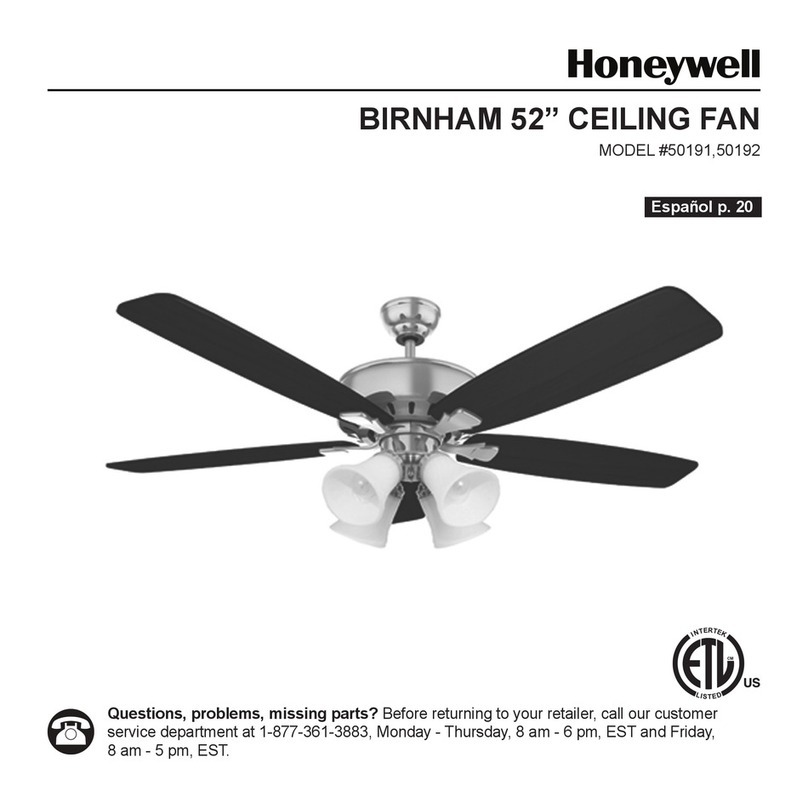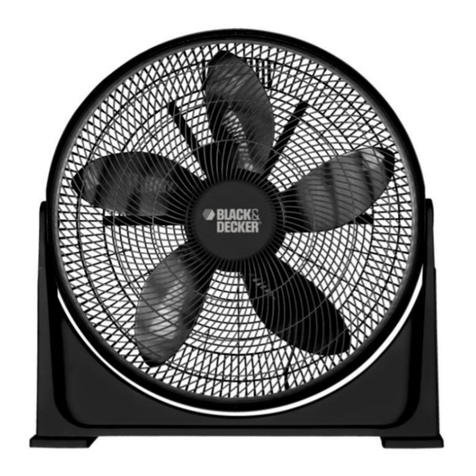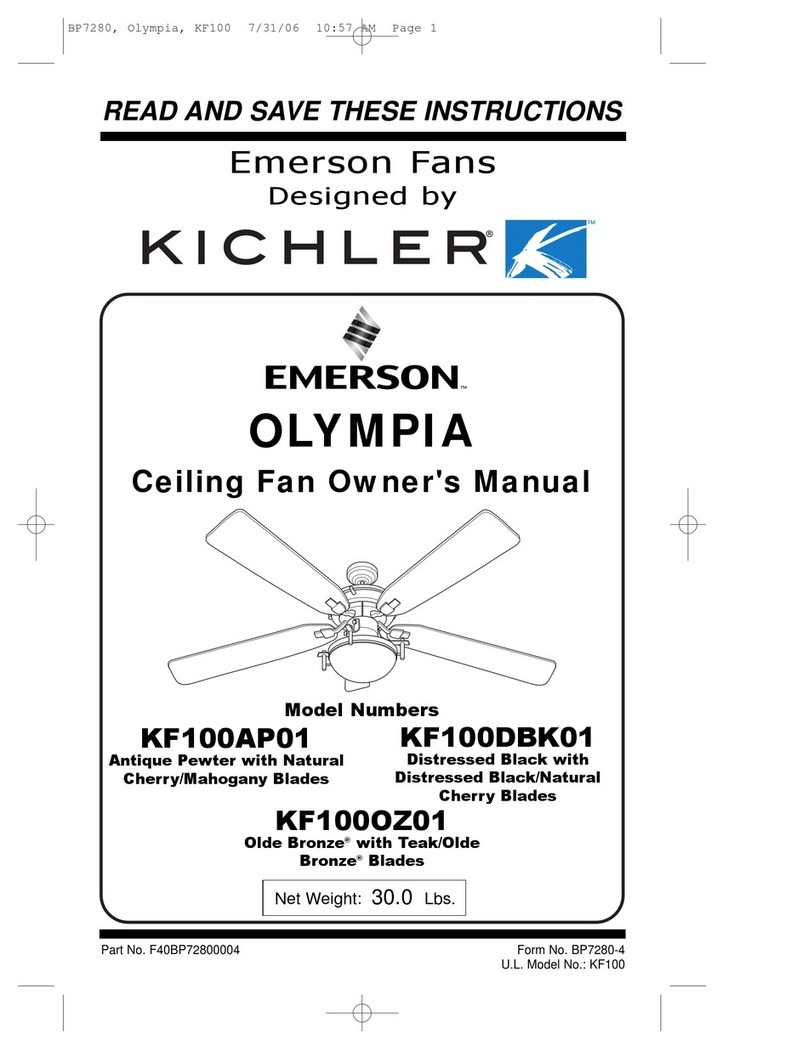SOLID AIR CPL 1400 User manual

INSTRUCTIONS
FOR CONTRACTORS
TYPE: CPL
English | subject to modications
02-2022
6809530-202012

SOLID AIR
®
INTERNATIONAL •T +31 598 36 12 21 •www.solid-air.com •contact@solid-air.nl
TABLE OF CONTENTS
1. About this document ................................................................................................................................................... 4
1.1 Scope..................................................................................................................................................................................................................................................4
1.2 Target group....................................................................................................................................................................................................................................4
1.3 Other applicable documents...................................................................................................................................................................................................4
1.4 Safekeeping of these documents ..........................................................................................................................................................................................4
1.5 Symbols ............................................................................................................................................................................................................................................4
1.6 Warnings..........................................................................................................................................................................................................................................4
2. Safety..............................................................................................................................................................................5
2.1 Intended use................................................................................................................................................................................................................................... 5
2.2 Safety measures............................................................................................................................................................................................................................ 5
2.2.1 What to do in the event of a re............................................................................................................................................................................................ 5
2.3 General safety information...................................................................................................................................................................................................... 5
2.4 Handover to operator .................................................................................................................................................................................................................6
2.5 Declaration of Conformity........................................................................................................................................................................................................6
3. Standards and regulations ............................................................................................................................................7
3.1 Relevant standards and regulations..................................................................................................................................................................................... 7
3.2 The following standards and regulations apply to installation and operation ................................................................................................. 7
4. Description.................................................................................................................................................................... 8
4.1 CPL-iV.................................................................................................................................................................................................................................................8
4.1.1 CPL-iV specications/dimensions .........................................................................................................................................................................................9
4.2 CPL-iH .............................................................................................................................................................................................................................................10
4.2.1 CPL-iH specications/dimensions........................................................................................................................................................................................ 11
4.3 CPL-A.................................................................................................................................................................................................................................................12
4.3.1 CPL-A specications/dimensions .........................................................................................................................................................................................13
5. Planning .......................................................................................................................................................................14
5.1 Siting the internal unit............................................................................................................................................................................................................. 14
5.1.1 Minimum clearance between outdoor air intake and exhaust air discharge to prevent an air short circuit. .................................... 14
5.2 Siting the external unit (weatherproof)............................................................................................................................................................................15
5.2.1 Connecting the condensate drain pipe and PWW heat exchanger.......................................................................................................................15
5.3 Position of operating side ...................................................................................................................................................................................................... 16
6. Installation...................................................................................................................................................................18
6.1 Delivered condition ................................................................................................................................................................................................................... 18
6.1.1 Storage............................................................................................................................................................................................................................................ 18
6.2 Transport........................................................................................................................................................................................................................................ 19
6.3 Disposal and recycling.............................................................................................................................................................................................................. 19
6.4 Installing the outdoor unit.................................................................................................................................................................................................... 20
6.5 Installing duct connections.....................................................................................................................................................................................................21
6.5.1 Installing square duct systems..............................................................................................................................................................................................21
6.5.2 Installing round duct systems ...............................................................................................................................................................................................21
6.6 Fitting the trap..............................................................................................................................................................................................................................21
6.7 Hydraulic connection................................................................................................................................................................................................................23
6.8 Electrical connection.................................................................................................................................................................................................................23
6.8.1 General information..................................................................................................................................................................................................................23
6.8.2 Power cable cross-section/onsite fuse protection.......................................................................................................................................................24
6.8.3 Motor data ....................................................................................................................................................................................................................................24
6.8.4 Fixing cable ducts for outdoor units ..................................................................................................................................................................................25

SOLID AIR
®
INTERNATIONAL •T +31 598 36 12 21 •www.solid-air.com •contact@solid-air.nl
7. Commissioning ........................................................................................................................................................... 26
7.1 Preparation for commissioning............................................................................................................................................................................................27
7.2 Starting the system...................................................................................................................................................................................................................27
7.2.1 Starting the fans........................................................................................................................................................................................................................ 28
7.2.2 Commission the electric preheating coil (accessories).............................................................................................................................................. 28
7.2.3 Electric reheating coil (accessory)....................................................................................................................................................................................... 28
7.2.4 Countercurrent plate heat exchanger .............................................................................................................................................................................. 29
7.2.5 Quick heat-up (boost function)........................................................................................................................................................................................... 29
7.3 Flow rate calculation................................................................................................................................................................................................................ 29
7.3.1 Measure eective pressure................................................................................................................................................................................................... 30
7.3.2 CPL-1400 eective pressure ................................................................................................................................................................................................. 31
7.3.3 CPL-2400 eective pressure.................................................................................................................................................................................................. 31
7.3.4 CPL-3300 eective pressure .................................................................................................................................................................................................32
7.3.5 CPL-4700 eective pressure .................................................................................................................................................................................................32
7.3.6 CPL-6100 eective pressure .................................................................................................................................................................................................33
7.4 Further settings for the BMK and accessories ...............................................................................................................................................................33
8. Maintenance............................................................................................................................................................... 34
8.1 General information about maintenance........................................................................................................................................................................34
8.2 Maintenance shutdown..........................................................................................................................................................................................................34
8.3 Servicing the equipment.........................................................................................................................................................................................................34
8.3.1 Compact lter..............................................................................................................................................................................................................................34
8.3.2 Fan motor unit.............................................................................................................................................................................................................................35
8.3.3 Electrical equipment.................................................................................................................................................................................................................35
8.3.4 Countercurrent plate heat exchanger (PHE)...................................................................................................................................................................35
8.3.5 Electric preheating coil / electric reheating coil (accessory).....................................................................................................................................35
8.3.6 Bypass damper/extract air damper/outdoor air damper/boost damper...........................................................................................................35
8.3.7 Damper servomotors OPEN/CLOSED or variable..........................................................................................................................................................35
8.3.8 Condensate pans........................................................................................................................................................................................................................35
8.3.9 Trap ...................................................................................................................................................................................................................................................35
8.4 Hygiene CPL checklist.............................................................................................................................................................................................................. 36
9. Appendix......................................................................................................................................................................37
9.1 Connection diagram for CPL-1400, 2400, 3300, 4700, 6100 .....................................................................................................................................37
9.1.1 General symbols ........................................................................................................................................................................................................................ 38
9.1.2 Arrangement of terminal strips in dierent versions of the unit......................................................................................................................... 39
9.1.3 Connections terminal strip X1..............................................................................................................................................................................................40
9.1.4 Connections terminal strip X2............................................................................................................................................................................................. 42
9.1.5 Connections terminal strip X3............................................................................................................................................................................................. 44
9.1.6 Connection terminal strip X4...............................................................................................................................................................................................46
9.1.7 Connection terminal strip X6 and X8 ............................................................................................................................................................................... 48
9.1.8 Connection terminal strips XE1 and XE2.......................................................................................................................................................................... 50
9.1.9 Detailed connection for i1 to i3.............................................................................................................................................................................................52
9.1.10 Detailed connection for i4 to i5............................................................................................................................................................................................53
9.1.11 Overview of cables for onsite wiring..................................................................................................................................................................................54
9.1.12 Temperature sensors performance curve (NTC5k) .......................................................................................................................................................55

4
SOLID AIR
®
INTERNATIONAL • T +31 598 36 12 21 • www.solid-air.com •contact@solid-air.nl
1. ABOUT THIS DOCUMENT
>> Read this document before you begin working on the appliance.
>> Follow the instructions in this document.
Failure to observe these instructions voids any Solid Air Climate Solutions warranty.
1.1 Scope
This document is for the Solid Air CPL comfort compact ventilation unit.
1.2 Target group
This document is intended for air conditioning, ventilation and electricity contractors.
1.3 Other applicable documents
•Wiring diagram for control.
•WRS-K instructions.
•Conguration assistant.
•Notes in the form of labels.
•The documents for all accessory modules and other accessories also apply where relevant.
1.4 Safekeeping of these documents
Documents must be kept in a suitable location and must be available at all times.
The user is responsible for the safekeeping of all documents.
The documents are provided by the contractor.
1.5 Symbols
The following symbols are used in this document:
Table 1.1 Meaning of the symbols.
1.6 Warnings
Warnings in the text warn you of possible risks before the start of an instruction.
The warnings provide you with information on the possible severity of the risk using a pictogram and a keyword.
Table 1.2 Meaning of warnings.
Symbol Meaning
>> An action which must be taken..
qIndicates a step in images: The numbering indicates the order in which steps are taken.
➠A necessary requirement.
✔The outcome of an action.
Important information regarding the proper use of the appliance.
A reference to other relevant documents.
i
Symbol Keyword Explanation
DANGER This means that there is a risk of serious injury or loss of life.
WARNING This means that there is a potential risk of serious injury or loss of life.
CAUTION This means that there is a potential risk of minor to moderate injury.
NOTE This means that material damage may occur.

5
SOLID AIR
®
INTERNATIONAL • T +31 598 36 12 21 • www.solid-air.com •contact@solid-air.nl
2. SAFETY
>> The heat generator may only be worked on by contractors.
>> In accordance with VDE 0105 Part 1, work on electrical components may only be carried out by qualied electricians.
2.1 Intended use
Solid Air CPL ventilation units are designed to heat and lter normal air. The maximum air intake temperature is
+40 °C. The use of these units in wet rooms or rooms with explosive atmospheres is not permissible. Handling very dusty
or aggressive media is not permissible.
Any onsite modication or improper use of the unit is not permissible and Solid Air GmbH accepts no liability for any
damage caused as a result.
If additional protective equipotential bonding is required due to structural requirements, this should be provided
onsite. The user or the certied electrician is obliged to ensure correct earthing of the appliances in accordance with the
applicable national and local electrical and installation regulations.
A conductive or non-conductive connection can be established between modules depending on the appliance
conguration. Modules with electrical equipment must always be connected with the earth conductor.
Ventilation units intended for internal installation must be placed in rooms that meet the requirements of VDI2050 (VDI
2050, Requirements for technical equipment rooms - Planning and execution). A contractor is dened as a qualied and
properly trained installer, electrician, etc.
The user is dened as somebody who has been trained to use the heat generator by a specialist.
The appliance may only be used up to an elevation of 2000 m above sea level.
The cables used in the unit are silicone-free and cadmium-free. They meet re safety standards of class Eca (DIN 60332-2).
2.2 Safety measures
Never remove, bypass or otherwise disable any safety or monitoring equipment. Only operate the heat generator if it is in
perfect technical condition. Any faults or damage that impact or might impact safety must be remedied immediately by a
qualied contractor.
>> All faulty components must be replaced with original Solid Air spare parts.
It may only be used for handling air. This air must not contain any harmful, combustible, explosive, aggressive, corrosive or
otherwise dangerous substances, as these would be distributed throughout the duct system or building, where they could
cause a risk to the health of, or even kill the occupants, animals or plants living there.
2.2.1 What to do in the event of a re
The unit does not present a direct risk of re. The small numbers of seals tted inside the unit can burn away if subjected
to external inuences.
>> If there is a re, disconnect the appliance from the power supply using the onsite smoke detector.
>> Wear respiratory equipment if you ght a re.
>> Use standard extinguishing agents such as water, extinguishing foam or extinguishing powder..

6
SOLID AIR
®
INTERNATIONAL • T +31 598 36 12 21 • www.solid-air.com •contact@solid-air.nl
2.3 General safety information
DANGER
Electrical voltage!
Danger of death from electrocution.
>> All electrical work must be performed by a contractor.
DANGER
Rotating fan!
Risk of severe to life-threatening injuries due to positive pressure or negative pressure.
>> Wait until the fan comes to a stop.
>> Open the inspection doors carefully.
>> Notify an approved contractor.
2.4 Handover to operator
>> Provide these instructions and the other applicable documents to the operator.
>> Instruct the operator on how to operate the system.
>> Make the operator aware of the following:
•Annual inspections and maintenance must be performed by a contractor.
•Solid Air recommends concluding an inspection and maintenance contract with a contractor.
•Repair work must be performed by a contractor.
•Use only genuine Solid Air spare parts.
•Do not make any technical changes to the appliance or control components.
•This guide and the other applicable documents must be kept safely in a suitable location and must
be available at all times.
>> Refer the operator to the operating instructions.
2.5 Declaration of Conformity
This product complies with European regulations and national requirements.

7
SOLID AIR
®
INTERNATIONAL • T +31 598 36 12 21 • www.solid-air.com •contact@solid-air.nl
3. STANDARDS AND REGULATIONS
3.1 Geldende normen en voorschriften
•Machinery Directive 2006/42/EC
•Low Voltage Directive 2014/35/EU
•EMC Directive 2014/30/EU
•ErP Directive 2009/125/EC
•DIN EN ISO 12100......................................... Safety of machinery - general principles for design
•DINEN ISO 13857: ........................................ Safety of machinery - safety distances
•DIN EN 349..................................................... Safety of machinery - minimum clearances
•DIN EN 953 ..................................................... Safety of machinery - guards
•DIN EN 1886................................................... Ventilation for buildings - central air-handling units
•DIN ISO 1940-1 .............................................. Mechanical vibration - balance quality requirements
•VDMA 24167................................................... Fans - safety requirements
•DIN EN 60204-1............................................ Safety of machinery - electrical equipment of machines
•DIN EN 60730................................................ Automatic electrical controls
•DIN EN 61000 -6-2+3 ................................. Electromagnetic Compatibility
•DIN EN 60335-1 (VDE 0700-1) ................. Safety of electrical appliances - general requirements
3.2 The following standards and regulations apply to installation and operation
•DIN EN 50106 (VDE 0700-500) .............. Safety of electrical appliances - tests
•DIN VDE 0100................................................ Regulations regarding the installation of high voltage systems up to 1000V
•DIN EN 50110-1 (VDE 0105-1) ................... Operation of electrical installations
•DIN VDE 0105-100 ....................................... Operation of electrical systems - general requirements
•DIN VDE 0701-0702..................................... Inspection after repair, modication of electrical appliances, periodic inspection
of electrical appliances
•VDI 2050.......................................................... Requirements for technical equipment rooms - Planning and execution

8
SOLID AIR
®
INTERNATIONAL • T +31 598 36 12 21 • www.solid-air.com •contact@solid-air.nl
4. DESCRIPTION
4.1 CPL-iV
Fig. 4.1 Description of CPL-iV
1Compact lter, extract air
2PWW heat exchanger (optional)
3Boost damper with servomotor (optional)
4Dierential pressure switch for lter monitoring
5Countercurrent heat exchanger with bypass
6EC fan, supply air
7Adjustable feet
8PWW aperture
9Connectors for DN50 trap
10 EC fan, extract air
11 Bypass damper with servomotor (variable speed)
12 Compact lter, outdoor air
13 Filter pre-dryer (optional)
14 Exhaust air damper with servomotor (open/close)
15 Outdoor air damper with servomotor (open/close)
16 Unit isolator
17 Control panel
18 BMK programming unit

9
SOLID AIR
®
INTERNATIONAL • T +31 598 36 12 21 • www.solid-air.com •contact@solid-air.nl
4.1.1 CPL-iV specications/dimensions
Fig. 4.2 CPL-iV dimensions
1Exhaust air 3Extract air
2Outdoor air 4Supply air
Specications
*Duct connection dimensions
Type CPL-iV- 1400 2400 3300 4700 6100
Length L (mm)
1525 2033 2033 2237 2237
Depth T (mm)
750 750 950 1360 1665
Depth T1 (incl. locks) (mm)
---765 968
Depth T2 (incl. locks) (mm)
---630 732
Total height H1 (mm)
1315 1722 1722 1749 1749
Height H (mm)
1017 1424 1424 1424 1424
Foot height (mm)
170 170 170 170 170
Damper height (mm)
128 128 128 155 155
Exhaust air (1) (mm)
Intl 596 x 206* Intl 596 x 307* Intl 799 x 307* Intl 1222 x 356* Intl 1527 x 356*
Outdoor air (2) (mm)
Intl 596 x 206* Intl 596 x 307* Intl 799 x 307* Intl 1222 x 356* Intl 1527 x 356*
Extract air (3) (mm)
Intl 596 x 206* Intl 596 x 307* Intl 799 x 307* Intl 1222 x 356* Intl 1527 x 356*
Supply air (4) (mm)
Intl 596 x 206* Intl 596 x 307* Intl 799 x 307* Intl 1222 x 356* Intl 1527 x 356*
Condensate connector
1 ½ “ 1 ½ “ 1 ½ “ 1 ½ “ 1 ½ “
Weight (kg)
250 360 450 645 725
Max. ow rate (m
3
/h)
1400 2400 3300 4700 6100
Fig. 4.3 CPL-iV 4700/CPL-iV-6100
split, Control unit pivotable

10
SOLID AIR
®
INTERNATIONAL • T +31 598 36 12 21 • www.solid-air.com •contact@solid-air.nl
4.2 CPL-iH
Fig. 4.4 Description of CPL-iH
1Compact lter, extract air
2Boost damper with servomotor (optional)
3EC fan, supply air
4PWW heat exchanger (optional)
5Adjustable feet
6PWW aperture
7Connectors for DN50 trap
8EC fan, extract air
9Exhaust air damper with servomotor (open/close)
10 Bypass damper with servomotor (variable speed)
11 Filter pre-dryer (optional)
12 Outdoor air damper with servomotor (open/close)
13 Compact lter, outdoor air
14 Dierential pressure switch for lter monitoring
15 Unit isolator
16 Control panel
17 BMK programming unit

11
SOLID AIR
®
INTERNATIONAL • T +31 598 36 12 21 • www.solid-air.com •contact@solid-air.nl
4.2.1 CPL-iH specications/dimensions
Fig. 4.5 CPL-iH dimensions
1Outdoor air 3Extract air
2Exhaust air 4Supply air
Specications
*Duct connection dimensions
Fig. 4.6 CPL-iH-4700,
CPL-iH-6100 split,
Control unit pivotable
Type CPL-iH- 1400 2400 3300 4700 6100
Length L (mm)
1525 2033 2033 2237 2237
Depth T (mm)
750 750 950 1360 1665
Depth T1 (incl. locks) (mm)
---663 968
Depth T2 (incl. locks) (mm)
---732 732
Total height H1 (mm)
1309 1716 1716 1716 1716
Height H (mm)
1017 1424 1424 1424 1424
Foot height (mm)
170 170 170 170 170
Control (mm)
122 122 122 122 122
Exhaust air (2) (mm)
Intl 612 x 409* Intl 612 x 612* Intl 815 x 612* Intl 1222 x 612* Intl 1527 x 612*
Outdoor air (1) (mm)
Intl 612 x 409* Intl 612 x 612* Intl 815 x 612* Intl 1222 x 612* Intl 1527 x 612*
Extract air (3) (mm)
Intl 612 x 409* Intl 612 x 612* Intl 815 x 612* Intl 1222 x 612* Intl 1527 x 612*
Supply air (4) (mm)
Intl 612 x 409* Intl 612 x 612* Intl 815 x 612* Intl 1222 x 612* Intl 1527 x 612*
Condensate connector
1 ½ “ 1 ½ “ 1 ½ “ 1 ½ “ 1 ½ “
Weight (kg)
250 360 450 645 725
Max. ow rate (m
3
/h)
1400 2400 3300 4700 6100

12
SOLID AIR
®
INTERNATIONAL • T +31 598 36 12 21 • www.solid-air.com •contact@solid-air.nl
4.3 CPL-A
Fig. 4.7 Description of CPL-A
1Discharge hood, extract air
2EC fan, extract air
3Exhaust air damper with servomotor (open/close)
4Countercurrent plate heat exchanger with bypass
5EC fan, supply air
6PWW heat exchanger
7PWW connection
8Base frame
9Connectors for DN50 trap
10 Boost damper with servomotor (optional)
11 Compact lter, extract air
12 Dierential pressure switch for lter monitoring
13 Intake hood, outdoor air
14 Outdoor air damper with servomotor (open/close)
15 Filter pre-dryer (optional)
16 Compact lter, outdoor air
17 Bypass damper with servomotor (variable speed)
18 Unit isolator
19 Control panel

13
SOLID AIR
®
INTERNATIONAL • T +31 598 36 12 21 • www.solid-air.com •contact@solid-air.nl
4.3.1 CPL-A specications/dimensions
Fig. 4.8 CPL-A dimensions
1Outdoor air 3Exhaust air
2Extract air 4Supply air
Specications
*Duct connection dimensions
Type CPL-A- 1400 2400 3300 4700 6100
Total length L1 (mm)
1905 2573 2573 2780 2780
Total depth T1 (mm)
815 815 1017 1425 1730
Total height H1 (mm)
1455 1860 1860 1860 1860
Length L (mm)
1525 2033 2033 2237 2237
Depth T (mm)
712 712 915 1322 1627
Height H (mm)
1021 1428 1428 1428 1428
Base frame (mm)
305 305 305 305 305
Extract air (2) (mm)
Intl 612 x 409* Intl 612 x 612* Intl 815 x 612* Intl 1222 x 612* Intl 1527 x 612*
Supply air (4) (mm)
Intl 612 x 409* Intl 612 x 612* Intl 815 x 612* Intl 1222 x 612* Intl 1527 x 612*
Condensate connector
1 ½ “ 1 ½ “ 1 ½ “ 1 ½ “ 1 ½ “
Weight (kg)
315 460 555 715 800
Max. ow rate (m
3
/h)
1400 2400 3300 4700 6100

14
SOLID AIR
®
INTERNATIONAL • T +31 598 36 12 21 • www.solid-air.com •contact@solid-air.nl
5. PLANNING
5.1 Siting the internal unit
• The installation site must be level and suciently load-bearing (at least 450 kg).
• The installation site must be able to bear the load of the ventilation unit without vibrations on a long term basis.
• Site the appliance in a room that is free from the risk of frost.
>>
A clearance of at least 750mm for the CPL-1400 and 950mm for the CPL-2400, CPL-3300, CPL-4700 and CPL-6100 is
required in front of the appliance to be able to open the inspection doors. Approx. 700mm clearance is necessary
above the unit for air duct connections.
>>
Level the unit horizontally (align using the adjustable feet).
>>
Provide drain outlet for draining o the condensate.
5.1.1 Minimum clearance between outdoor air intake and exhaust air discharge to prevent an air short circuit
Fig. 5.1 CPL-A minimum clearance intake - discharge
1Outdoor air
2Exhaust air

15
SOLID AIR
®
INTERNATIONAL • T +31 598 36 12 21 • www.solid-air.com •contact@solid-air.nl
5.2 Siting the external unit (weatherproof)
Fig. 5.2 Siting the CPL-A external unit
Weatherproof units must not be used for any load-bearing building functions or as a replacement for
any part of the roof (VDI38035.1/DINEN130536.2).
5.2.1 Connecting the condensate drain pipe and PWW heat exchanger
•With weatherproof units sited outdoors, keep the condensate drain and DHW coil free of frost;
provide suitable protection if required.
i

16
SOLID AIR
®
INTERNATIONAL • T +31 598 36 12 21 • www.solid-air.com •contact@solid-air.nl
5.3 Position of operating side
Fig. 5.1 Operating side
1Exhaust air 3Extract air
2Outdoor air 4Supply air
CPL-iV operating side, supply air, left CPL-iV operating side, supply air, right
CPL-iH operating side, supply air, left CPL-iH operating side, supply air, right
CPL-A operating side, supply air, left CPL-A operating side, supply air, right

17
SOLID AIR
®
INTERNATIONAL • T +31 598 36 12 21 • www.solid-air.com •contact@solid-air.nl
Air duct connections are identied with the following labels:
Outdoor air Exhaust air
Extract air Supply air
AUL / ODA
6801059 48/10
AUL / ODA
ABL /ETA
ABL /ETA
6801061 48/10
FOL/EHA
6801062 48/10
FOL/EHA
ZUL/SUP
6801060 48/10
ZUL/SUP

18
SOLID AIR
®
INTERNATIONAL • T +31 598 36 12 21 • www.solid-air.com •contact@solid-air.nl
6. INSTALLATION
6.1 Delivered condition
Fig. 6.1 CPL delivered condition
• Appliances are supplied fully assembled and fully wired.
• CPL ventilation units are supplied in packaging that protects them from dirt and damage.
>> Check the appliance for transport damage.
>> If there is any transport damage or a suspicion of damage, the recipient must indicate this on the
consignment note and have it countersigned by the haulier.
>> Report all transport damage to Solid Air immediately.
>> Dispose of the transport packaging in accordance with local regulations.
6.1.1 Storage
>> Store the ventilation in a dry area in temperatures between -25°C and +55°C.
>> If it is stored for a long time, ensure that all apertures are sealed against air and water ingress.

19
SOLID AIR
®
INTERNATIONAL • T +31 598 36 12 21 • www.solid-air.com •contact@solid-air.nl
6.2 Transport
NOTE
Damaged heat exchanger!
Plate heat exchangers and internal components are damaged.
>> Do not tilt the appliance during transport.
Transport external units using the eye bolts
>> Transport ropes must be at least as long as the distance to the eye bolts or crossbar.
6.3 Disposal and recycling
>> When the appliance reaches the end of its service life, it may only be dismantled by qualied personnel.
>> Before starting to dismantle the appliance, disconnect the power supply.
>> Power cables must be removed by qualied electricians.
>> Sort and dispose of metal and plastic parts according to material types and in compliance with local regulations.
>> Dispose of electrical and electronic components as electrical waste.

20
SOLID AIR
®
INTERNATIONAL • T +31 598 36 12 21 • www.solid-air.com •contact@solid-air.nl
6.4 Installing the outdoor unit
• Weatherproof units must not be used for any load-bearing building functions or as a replacement for any
part of the roof (VDI38035.1/DINEN130536.2).
>> The outdoor unit must be placed on a level horizontal surface with adequate load bearing capacity.
>> Base frames must be levelled horizontally (check with a spirit level).
• To prevent the inspection doors from jamming, the entire base frame must sit on the foundation.
Point loads are not permitted!
>> Provide permanently elastic noise insulation in the form of insulation strips between the installation
surface and the base frame. (This provides insulation against structure-born noise.)
Fig. 6.2 Insulation against structure-borne noise for the building
1Insulation against structure-borne noise 3Insulation if required
2Roof membrane
>> The Solid Air base frame must be insulated and integrated into the roof membrane onsite.
>> In the case of elevated positioning (CPL on onsite framework), the CPL must be secured against wind load.
Fig. 6.3 Insulation against structure-borne noise for the frame
1Insulation against structure-borne noise
This manual suits for next models
4
Table of contents
Popular Fan manuals by other brands
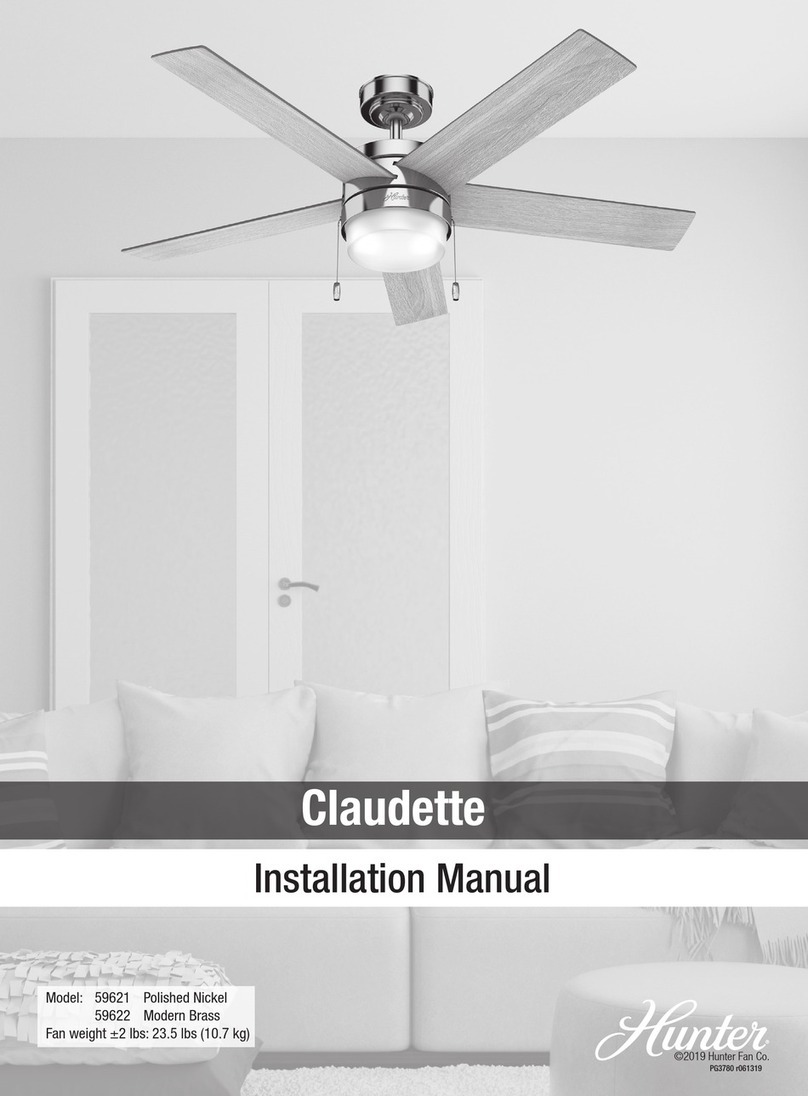
Hunter
Hunter Claudette installation manual
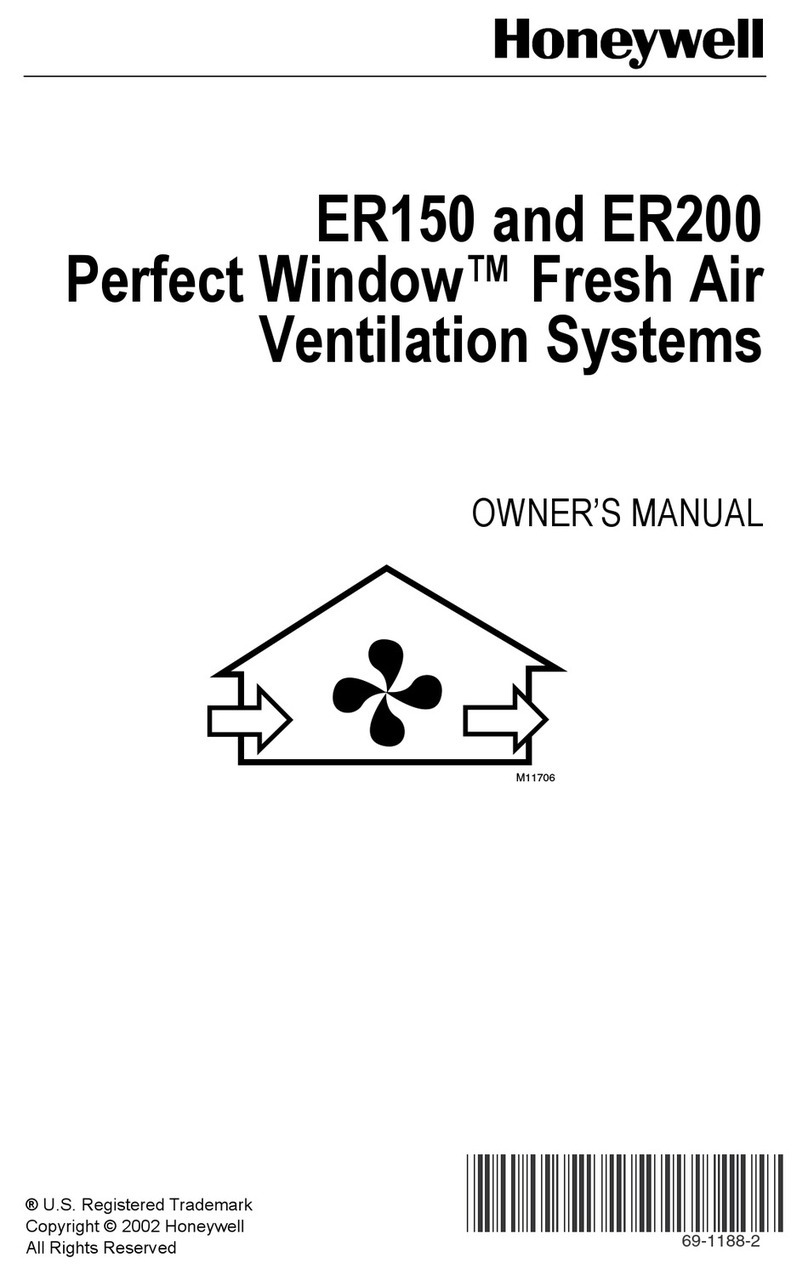
Honeywell
Honeywell PERFECT WINDOW ER150 owner's manual
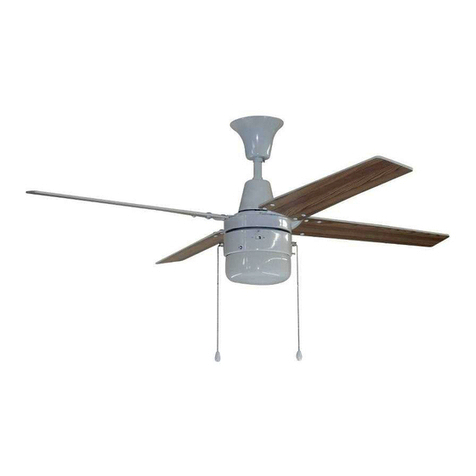
Craftmade
Craftmade Connery CON48 installation guide

Kichler Lighting
Kichler Lighting Emerson HIGH COUNTRY owner's manual
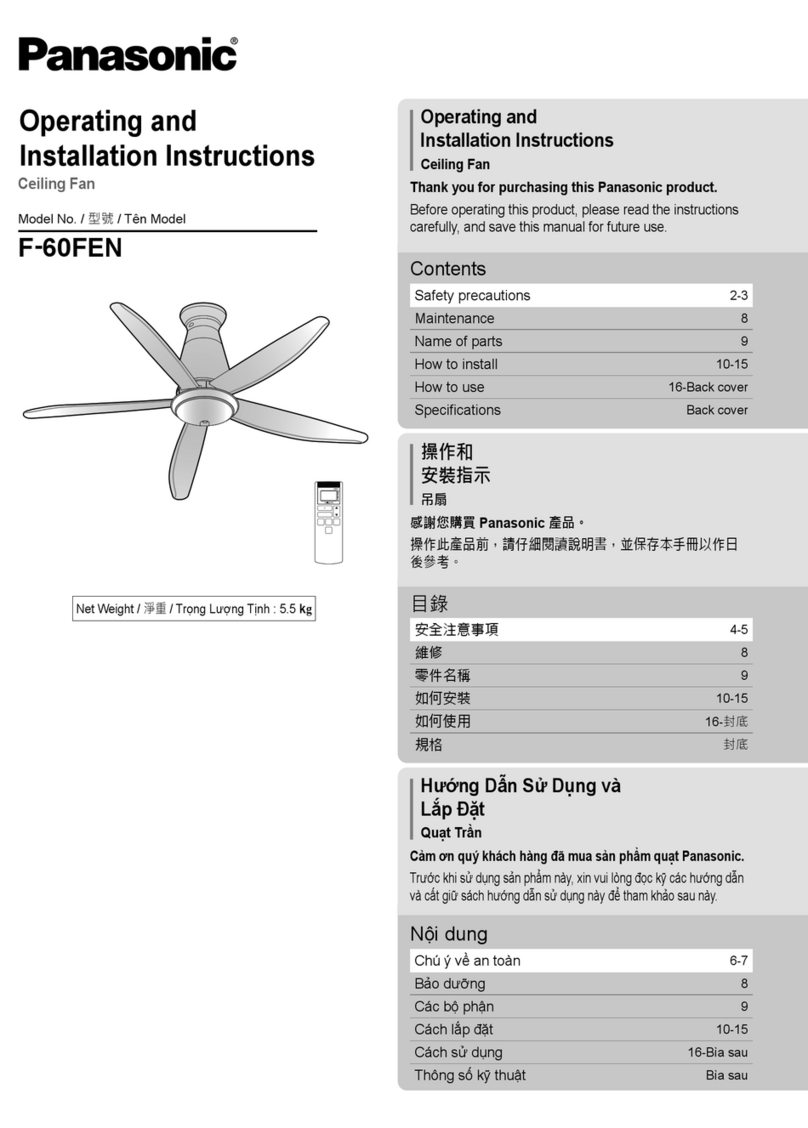
Panasonic
Panasonic F-60FEN Operating and installation instructions

Fisher
Fisher F-ERVXQ-D200 Technical manual
